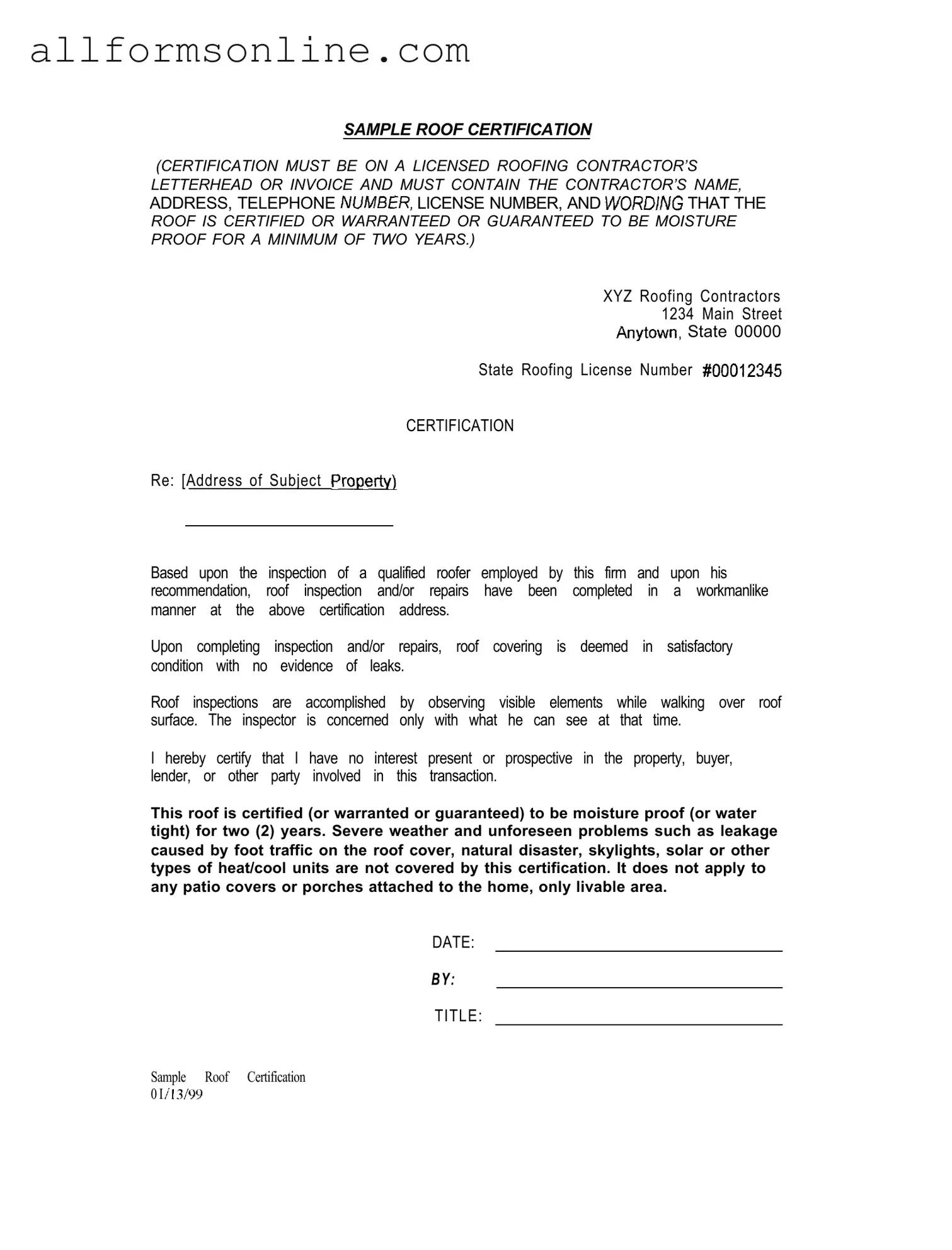What is a Sample Roof Certification form?
The Sample Roof Certification form is a document provided by a licensed roofing contractor to certify that a roof has been inspected and is in satisfactory condition. It serves as proof that the roof is moisture-proof for a minimum of two years, ensuring that the property owner can have confidence in the roof's integrity. The certification must be printed on the contractor's official letterhead or invoice and includes specific details such as the contractor's name, address, phone number, license number, and the certification wording.
Who can issue a Roof Certification?
A Roof Certification can only be issued by a licensed roofing contractor. This ensures that the inspection and any necessary repairs are performed by a qualified professional. The contractor must provide their license number and other identifying information on the certification to validate its authenticity.
What information is required on the Roof Certification form?
The Roof Certification form must include several key pieces of information. It should feature the contractor’s name, address, and telephone number, along with their state roofing license number. Additionally, the certification must clearly state that the roof is certified, warranted, or guaranteed to be moisture-proof for at least two years. The address of the property being certified must also be included.
What does the certification guarantee?
The certification guarantees that the roof has been inspected and is in satisfactory condition, free from leaks at the time of inspection. It provides assurance that the roof will remain moisture-proof for a period of two years. However, it is important to note that this guarantee does not cover damage caused by severe weather, foot traffic, or other unforeseen issues such as natural disasters or the installation of skylights and HVAC units.
Are there any exclusions in the Roof Certification?
Yes, the Roof Certification includes specific exclusions. It does not cover damage resulting from severe weather conditions or unforeseen problems, such as leaks caused by foot traffic on the roof. Furthermore, the certification does not apply to patio covers or porches attached to the home; it only pertains to the livable area of the property.
How long is the Roof Certification valid?
The Roof Certification is valid for a minimum of two years from the date of issuance. This time frame allows property owners to have peace of mind regarding their roof's condition, but it is advisable to have regular inspections to ensure ongoing roof health beyond this period.
What should I do if I have a problem with my roof during the certification period?
If you encounter any issues with your roof during the certification period, it is essential to contact the roofing contractor who issued the certification. While the certification covers specific conditions, any problems arising from normal wear and tear or unforeseen circumstances may not be covered. Consulting with the contractor can help determine the best course of action for repairs or further inspections.
